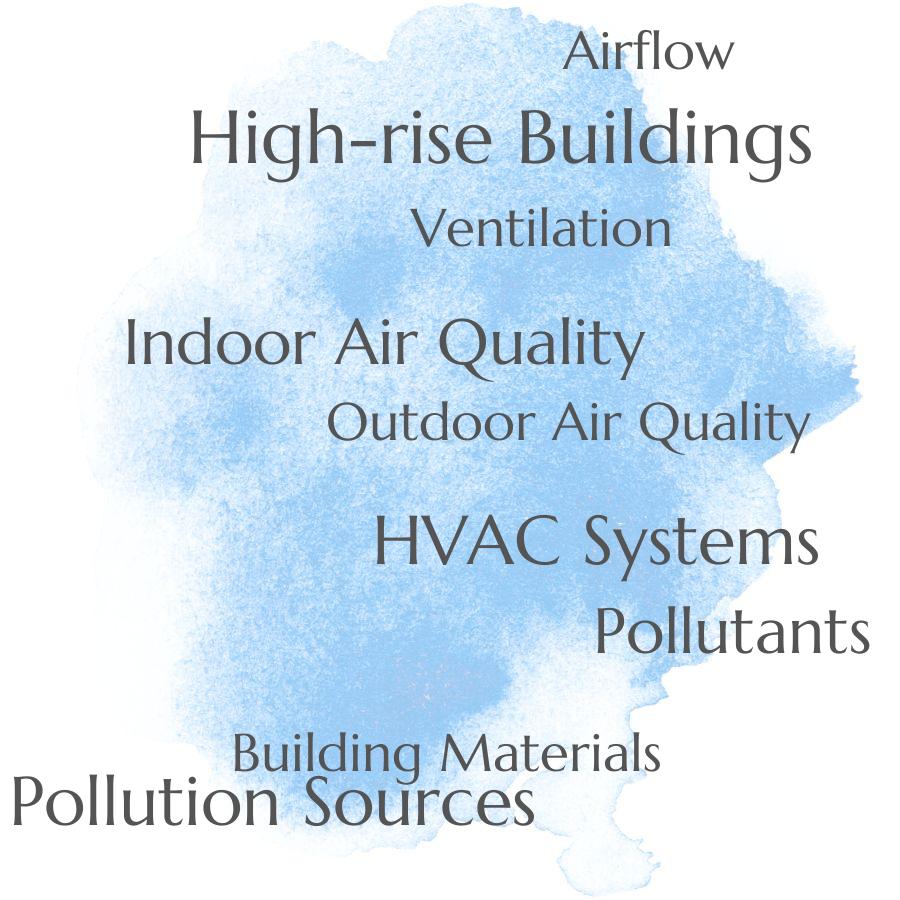Indoor air quality in high-rise buildings can be significantly impacted by outdoor air quality, as pollutants from the outdoors can easily enter through windows and ventilation systems.
High-rise buildings are often located in densely populated urban areas, which can lead to a variety of air quality issues. Poor outdoor air quality can have a significant impact on indoor air quality in these buildings, leading to health and comfort problems for occupants.
In this blog post, we’ll explore how outdoor air quality affects indoor air quality in high-rise buildings and what measures can be taken to improve the situation.
Pollutants

These pollutants can come from both indoor and outdoor sources, but in high-rise buildings, the outdoor air quality has a greater impact on indoor air quality. Outdoor pollutants such as dust, pollen, smoke, ozone, nitrogen dioxide and sulfur dioxide can enter the building through windows or ventilation systems and accumulate inside.
This accumulation of pollutants indoors can lead to poor air quality which may cause health problems for those living or working in the building. These pollutants may react with other chemicals found indoors to create secondary pollutants which further reduce the indoor air quality.
To reduce this risk of poor indoor air quality due to outdoor pollution it is important for high-rise buildings to have effective filtration systems in place that will help remove these harmful particles from entering the building’s interior spaces.
Ventilation
Ventilation helps to bring fresh outdoor air into the building, while also removing stale indoor air. This process helps to reduce the concentration of pollutants and contaminants that can accumulate indoors due to human activities such as cooking, smoking, and cleaning.
The quality of the outdoor air will directly affect the quality of the indoor air; if there are high levels of pollutants or contaminants present outdoors, these will be brought into the building through ventilation systems. Therefore, it is important for high-rise buildings to have effective ventilation systems that are able to filter out harmful particles from outside before they enter indoors.
Regular maintenance should be done on these systems in order to ensure they are working properly and efficiently at all times.
Airflow
Airflow refers to the movement of air from outside to inside a building, and vice versa. In order for outdoor air quality to affect indoor air quality, it must be able to enter the building.
This is done through natural ventilation or mechanical systems such as fans and HVAC systems. Natural ventilation occurs when wind causes pressure differences between indoors and outdoors, which forces fresh outdoor air into the building while pushing stale indoor air out.
Mechanical systems use fans or blowers to move large volumes of fresh outdoor air into a space while exhausting stale indoor air out at the same time. Both methods are necessary for maintaining good indoor air quality in high-rise buildings by ensuring that there is enough airflow for pollutants from outside not to accumulate indoors and cause health problems for occupants.
Pollution Sources
Pollutants such as particulate matter, ozone, nitrogen dioxide and sulfur dioxide can be released into the atmosphere from a variety of sources including industrial activities, motor vehicles and burning of fossil fuels. These pollutants can travel long distances through the air before settling down on surfaces or entering buildings.
As these pollutants accumulate inside high-rise buildings they can cause poor indoor air quality leading to health problems for occupants. To reduce pollution levels indoors it is important to limit exposure to outdoor pollution sources by reducing emissions from nearby industries and motor vehicles as well as using cleaner energy sources for heating and cooling systems within the building.
Building Materials
The type of material used to construct the building can have a significant impact on the amount of pollutants that enter and remain inside. For example, porous materials such as wood or brick allow more pollutants to pass through than non-porous materials like concrete or metal.
Certain types of insulation can trap airborne particles and prevent them from entering the building’s interior spaces. By using appropriate building materials, it is possible to reduce the amount of outdoor air pollution that enters a high-rise building and improve its indoor air quality.
HVAC Systems
HVAC stands for Heating, Ventilation, and Air Conditioning. These systems are responsible for regulating the temperature and humidity levels inside a building as well as filtering out pollutants from the outdoor air that can enter through windows or other openings.
The system works by drawing in outside air, heating or cooling it to the desired temperature, and then circulating it throughout the building. It also filters out any contaminants such as dust particles, pollen, smoke, and other airborne pollutants before they can enter into living spaces.
By doing this, HVAC systems help maintain good indoor air quality which is essential for occupant health and comfort.
Weather Conditions
When outdoor air is polluted, it can be drawn into the building through open windows or doors, ventilation systems, and other openings. This means that if there are high levels of pollutants in the outside air, they will also be present in the indoor air.
Weather conditions such as wind direction and speed can affect how much polluted outdoor air enters a building. For example, if there is a strong wind blowing from an area with poor air quality towards a high-rise building, more pollutants may enter than usual.
On the other hand, if winds are light or blowing away from an area with poor air quality then less pollution may enter the building. Therefore understanding local weather patterns and taking steps to reduce exposure to polluted outdoor air can help improve indoor air quality in high-rise buildings.